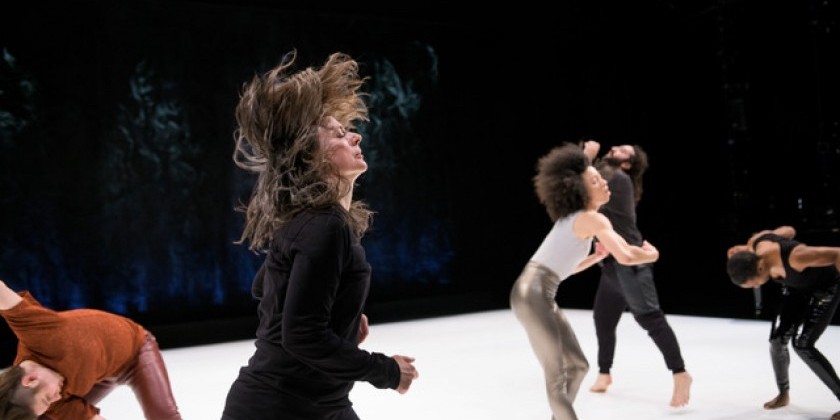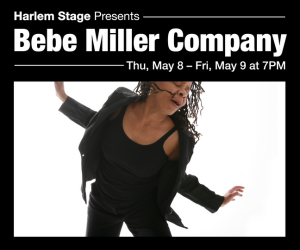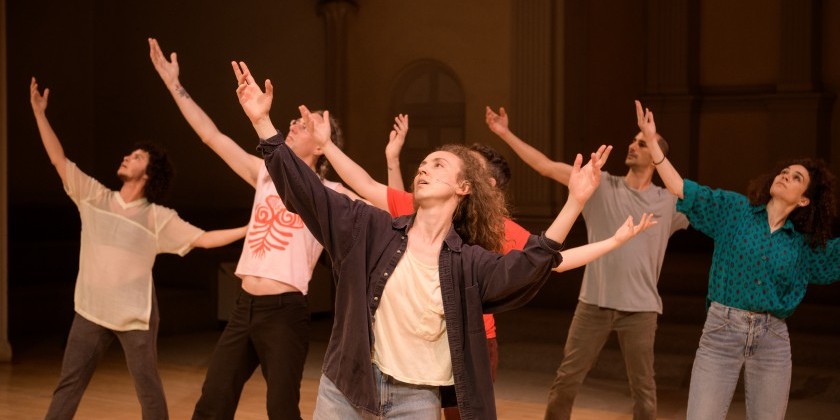IMPRESSIONS: Kathy Westwater’s “Rambler, Worlds Worlds A Part” presented by Lumberyard Center For Film And Performing Arts and New York Live Arts

February 15, 2019
Choreography: Kathy Westwater
Performance: Ilona Bito, Thomas F. DeFrantz, Alex Romania, Rakia Seaborn, Paul Singh, Stacy Lynn Smith, and Kathy Westwater
Music Composition:Julius Eastman
Live Music: Joseph Kubera, Adam Tendler, plus a special appearance by musician and composer M. Lamar
Kathy Westwater’s Rambler, Worlds Worlds A Part gathers a group of collaborators to dive into her 20-plus-year exploration of pain — the body and others’ pain. Dancers complete moments of pre-performance care as the audience enters. They shake and stretch limbs, surrendering their weight into the white marley floor. Eventually, they choose from an assortment of upholstered chairs positioned along the downstage perimeter.
New York Live Arts, where the piece makes its world premiere, is expansive and stripped bare of theater curtains. Two grand Yamaha pianos occupy either side of the performance space, and soft light illuminates graphite textures in the back wall. The seven performers’ muted and metallic pedestrian clothes occasionally pop against the blue, white, and copper tones that emanate from the wall.

People take turns accumulating into the space, doing variations of a released head, bent elbows, curved spine, and open clavicle. Imagine a fallen bird with broken wings trying to walk. Solo, duet, and group arrangements peel, press, prance, tilt, and explode off a vertical axis. Bodies slide to the ground and drape over another dancer’s rounded backs. Heads gently rest on a partner’s shoulder before moving through loose unison. Once the statement is complete, the dancers look past the audience and return to lounge in the comfy chairs. The entire work cycles through variations of the above.
Musical composition by the late post-minimalist composer Julius Eastman and a special appearance by musician-composer M. Lamar crystallizes into the container of worlds. The music is a steady babble of sound. Eastman’s lengthy score and dedication to minimalism create a melodic sedative. Mirroring the rhythm of the piece, both suggest the anticipation of a denied climax. A program note states, “The piece does not arch or crescendo. No one event is more important than another.” Thus, the viewer must negotiate a fluctuation of engagement over time.

Eventually, performers and off-stage crew join pianists Joseph Kubera and Adam Tendler. This welcome shift adds layers of synchronous sound. They, though, soon disappear, and four chairs are positioned throughout the space as M. Lamar takes the helm for the last quarter of the show. His guttural wails rise and fall over the rumble of minor chords. This introduces voice into the work although the pacing and execution of movement remain the same.
Rambler, Worlds Worlds A Part invites us to witness the impenetrable. The cause and articulation of pain are so individualized that one cannot ‘try-on’ another’s pain, but perhaps committing to a shared movement language demonstrates our capacity for empathy.

I left with many questions from the legibility of dance and its ideal viewer, to the necessity of witnesses. How can an audience prepare to watch ‘somatic investigation’ as performance? And, if you surface pain for artistic intrigue, how do you manage it once it’s present? Similar to the debate that surfaced around Bill T. Jones’ work Still/Here in 1994, intention is a constant question when the capitalization of pain is considered whether for research, art or both.
As the title suggests, a performance about pain feels worlds apart from its intellectual consideration. Isolated fragments refuse to be reconciled, and it’s unclear how, why, or if they are connected. Westwater says, “This is not a dance about pain, it’s a dance about dance about pain.” Say that 10 times fast and wade through its headiness with no expectation of resolve. Its convolution behaves much like the complexities of pain, varying and indefinable.















